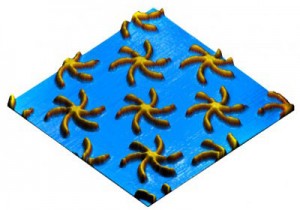In response to my request, I received a comment from nanoAlberta about Peter Julian’s (Canadian MP) proposed nanotechnology legislation from Joel Burford this morning (Mote: There are square brackets to indicate where I’ve added some links),
nanoAlberta as part of Alberta Innovates – Technology Futures, a provincial corporation, is not a regulatory body and looks to the responsible Federal and Provincial departments for regulatory guidance on safe handling and adoption of nanotechnologies. As part of the community of interests, nanoAlberta has supported the beta site launch of the GoodNanoGuide http://goodnanoguide.org/tiki-index.php?page=HomePage for best practices on worksite safe handling of nanomaterials and encourages work such as:
Dr. David Cramb, University of Calgary – Dr. Cramb is researching the dynamics of nanoparticles directly in organisms and the environment with the aim of developing a predictive model of nanoparticle behavior in biological and environmental matrices. [my interview with Dr. Cramb is here]
Dr. Greg Goss, University of Alberta – Dr. Goss has initiated a research program to investigate the potential toxicity/specificity of manufactured nanomaterials. The overall goal of this research is to predict the relative toxicity of specific manufactured nanomaterials and allow for the development of solid science based guidelines for risk prediction and regulatory guidelines. [project was mentioned in my postings here last year]
nanoAlberta also encourages the local nanotechology community’s participation in national and international efforts assesing the ethical, environmental, economic, legal and societal issues of nanotechnologies with organizations such as the OECD (Organization for Economic Co-operation and Development), and the ISO (International Standards Organization).
Thank you, Joel and nanoAlberta.
Peter Julian interview Part 1, Part 2, Part 3, Comments: Nano Ontario
Nano Days update
As part of the national Nano Days events (March 27 – April 4, 2010) which take place across the US as part of a public outreach/engagement effort, the University of Albany’s ‘Nano College’ is visiting the local mall. From the news item on Nanowerk,
The exciting world of nanotechnology will be on display at Crossgates Mall in Albany this week as the College of Nanoscale Science and Engineering (“CNSE”) of the University at Albany presents a unique “Nano in the Mall” series as part of NanoDays 2010, a nationwide effort to showcase the emerging field of nanoscale science and engineering.
The annual celebration of NanoDays, which runs from March 27 through April 4, encompasses a week of community-based educational outreach events to raise public awareness of nanotechnology.
Beginning on Monday, March 29 and continuing daily through Friday, April 2, CNSE faculty will offer educational displays, interactive exhibits and informational programming on the second floor of Crossgates Mall each day from 11 a.m. to 2 p.m.
NOTE: The ‘Nano College’ is more properly referred to as the College of Nanoscale Science and Engineering (CNSE).
Nano Days will host over 200 events being organized by museums, research centres, and universities across the US.
This ‘nano mall event’ reminded me of a ‘science and technology in the mall event’. I managed to convince the company I was working for to participate in the National Science and Technology Week that’s been taking place in Canada for at least 16 years (this year’s event takes place Oct. 15 – 24, 2010, no more details yet but you can look at the page here).
We set up a booth in what was at that time was one of the most frequented malls in Canada and showed off technology that all my co-workers considered too dull for public consumption (software that enabled the establishment of Wide Area Networks for financial institutions using legacy hardware).
We enjoyed a steady stream of visitors from the moment we set up until we packed up. It turned out that people were curious about what was happening when they swiped their debit or credit cards. Yes, I enjoyed my co-workers’ (naysayers’) shock.
It seems pretty obvious that most people are not going to turn out for a lecture at a university but they will take a few minutes at the mall to check out what you’re doing. Unfortunately, the National Science and Technology Week organizers no longer employ contractors to organize these kinds of events and rely instead on volunteers from the institutions who don’t have the time (and often the imagination) to locate their ‘science outreach’ events in places where the general public gathers.
Public engagement and the US National Nanotechnology Initiative (NNI)
There’s a guest writer over at the 2020 Science blog today, David H. Guston, director of the Center for Nanotechnology in Society at Arizona State University (ASU). I believe there are three such centers in the US funded by the National Science Foundation with the other two being located at the University of California Santa Barbara and Cornell University.
Guston provides an informal overview of the history of nanotechnoloyg public engagement in the US. From the post,
Since the early days of NNI, as well as since the 2003 Act, public engagement with nanotechnology was supposed to be on the agenda. The early reports by NSF on the societal aspects of nanotechnology refer to the productive role that public engagement can play, and the relevant passage from the 2003 Act 2(B)(10)(d) authorizes:
“public input and outreach to be integrated into the Program by the convening of regular and ongoing public discussions, through mechanisms such as citizens’ panels, consensus conferences, and educational events, as appropriate.”
Bluntly, however, public engagement has not been implemented as robustly as it might have been.
His perspective is quite interesting to me as I’ve always thought the Americans are more advanced in their efforts than we are here in Canada and despite Guston’s dismay over their situation (and I sympathize with his position) his post confirms my opinion.
Tomorrow: a nano haiku

